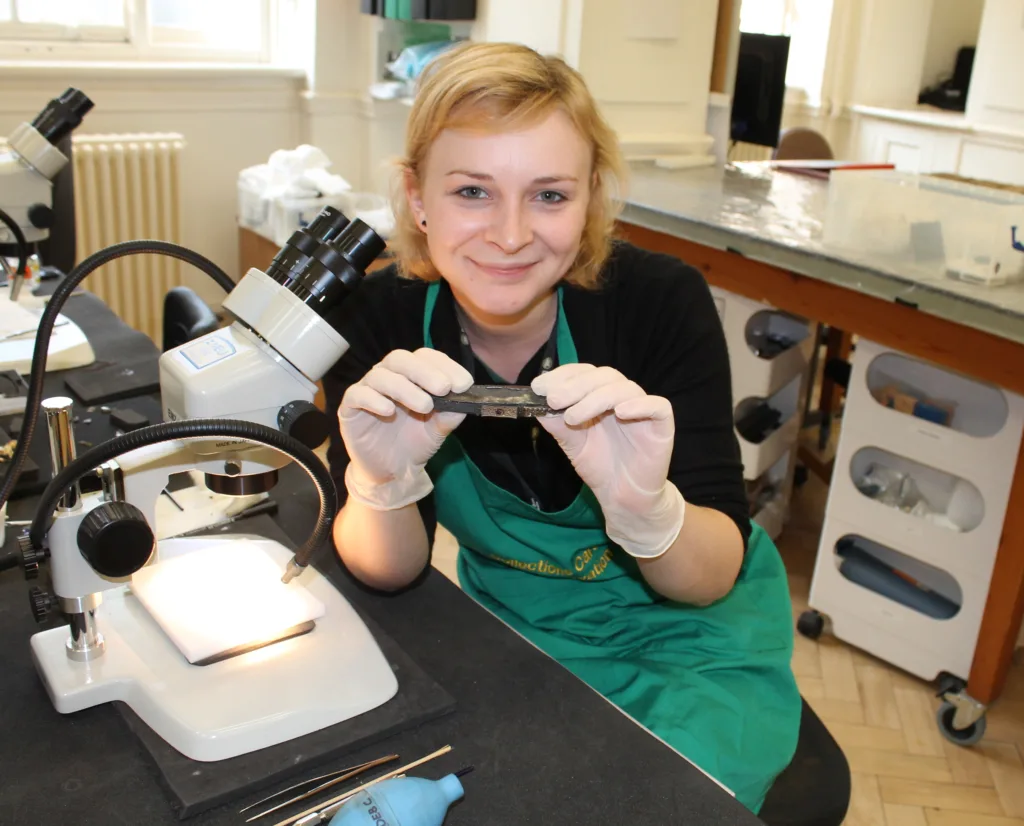The Bowes Museum Blog

A New Face in Conservation

You might have seen me wandering about the Museum, my name is Kayleigh and I started in August as a part-time preventive technician in the conservation department.
I trained at Durham University in objects conservation, firstly with an undergraduate degree in Chemistry and Archaeology, and then a Masters in Conservation. I recently moved home to the North East after fulfilling a contract as a project conservator on the Staffordshire Hoard Project at Birmingham Museums Trust. You can read all about the team’s work on the website, https://www.staffordshirehoard.org.uk/blog/research.

My work history is varied and I have completed internships and work placements with the Royal Albert Memorial Museum in Exeter, the Japanese Institute of Anatolian Archaeology in Turkey and the Wiltshire and Swindon History Centre Conservation Centre. I was also for some time the Art Conservation Technician for the Masters programme at Northumbria University.

Hanwell system, showing temperature and relative humidity for one of the sensors
Most of my work involves actions to prevent and delay the deterioration of the collections via methods such as condition surveys, environmental monitoring, as well as basic intervention to keep items free from agents of decay such as dust and pests which can cause further harm. Monitoring the environment (relative humidity, temperature and light) allows us to check that the conditions are safe for the objects against benchmarked standards. We can then react to changes beyond the safe thresholds and protect a greater number of objects at any one time, before further damage occurs.
Most recently I have been condition surveying some of the furniture collection for signs of damage. This will then be compared to a survey carried out in 1998 to see if any of the articles have become more unstable and interventive conservation is required.
Below you can see some of the decoration on a candelabra pedestal. The bird sits upon a section has been historically filled with a modern material to disguise and support the inlay tortoiseshell loss. At the right the brass sheet is separating which could be the result of temperature changes throughout time. Large ranges cause the different materials to expand and contract at different rates causing distortion to the original shape of the metal decoration.

Pedestal decoration, with tortoise shell and other inlay
By Kayleigh Fuller, Preventive Conservation Technician







